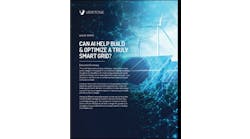Chasing Off Misinformation about Microgrids: a North Carolina Project
Every energy developer knows that misinformation can kill a project. That’s why an energy education center in North Carolina has undertaken a mission to get the right information out about microgrids.
The Center for Energy Education is not new to this kind of work. The nonprofit has been working to educate communities about the benefits of clean energy, mostly solar, and is now using that strategy to deploy microgrids, beginning with three in eastern North Carolina, where the organization is based.
“There’s a lot of misinformation about renewables and somehow so much misinformation that people are afraid to welcome renewables into their communities,” said Mozine Lowe, the Center for Energy Education’s executive director.
For example, the center has found itself fending off the perpetuation of beliefs that solar projects damage soil, pollute the ground with chemicals, kill wildlife and rob land from farmers. The center provides statistics and information to demonstrate that these worries aren’t true.
On June 28, the organization will kick off its microgrid effort with a workshop, “Microgrids for Resilience and Equity in Eastern North Carolina.”
The goal is to educate citizens about the role of microgrids in rural communities and their ability to provide resilience, equity and emergency management, Lowe said.
At the workshop, the center will discuss bad weather events that led to outages and provide examples of microgrids in North Carolina. Microgrid industry members are expected to attend the meeting to discuss how microgrids provide resilience during outages.
“At the end of the day, we will know what microgrids will look like in our counties,” said Lowe.
Three initial sites for microgrids
The center has identified three publicly owned sites in eastern North Carolina that are subject to the effects of climate change, especially flooding, said Lowe. These sites also have some existing solar and are located in underserved communities.
The center’s office is among the three sites. It would serve as a clean energy workforce laboratory, where community members and microgrid and solar industry members could be brought together to be informed about clean energy work opportunities.
With this type of education, the lab would create experts and leaders who could help pull together microgrid projects, said Lowe.
Leveraging lessons learned from solar
The center used a similar process to create solar projects, said Lowe. As part of that process, the organization has trained more than 200 solar installers – many of whom work all over the country – and now organizes quarterly workforce training meetings.
Lowe expects that the solar installers will be interested in working on microgrid projects.
“Some are working on solar in nearby counties and enjoy the work,” said Lowe. “They come to us and ask for the next big project. I think microgrids could be the next big project.”
When the center begins a project, the organization talks to local politicians, economic development agencies, planning departments, workforce development agencies, schools and teachers.
“We try to reach every pocket in the community to talk about clean energy projects,” said Lowe.
For example, to achieve its goals, the center created a group called the Radiant Rays made up of young women who serve as clean energy ambassadors.
And fire safety professionals attended a webinar to teach people about how to manage solar installation emergencies. In addition, the center has hosted a wind energy workshop and a climate awareness festival. Renewable energy solar camps are also part of the education efforts.
Microgrid models in North Carolina
North Carolina already offers a few models that stakeholders can study in their efforts to deploy microgrids.
When Hurricane Dorian slammed into North Carolina’s Ocracoke Island in September 2019, creating a tidal wave, flood waters rose by 13 feet. The island was able to restore power three days later, thanks to a microgrid.
Duke Energy has been developing microgrids, and the utility powered an entire town – Hot Springs — with a microgrid.
Another Duke Energy effort is the Mount Holly project, which will involve a new depot located near an existing microgrid that will show how to charge electric vehicle fleets from both a microgrid and the grid. The idea is to help speed the electrification of commercial fleets, a growth market for both utilities and microgrids. Some fleet owners are turning to microgrids out of concern about grid reliability or because they want to manage costs or emissions with on-site energy resources.
And a group of volunteers, many with backgrounds in engineering and renewables, has proposed a critical services microgrid for Asheville. The microgrid would not only bring resilience to certain county buildings but also could mark the beginning of a larger grid of microgrids as a model for other areas.
While the center has been pursuing its education goals in North Carolina, it’s also been hearing from people around the US.
“We get calls from all over the country from people who want to know how to help communities feel prepared for renewables,” she said.








